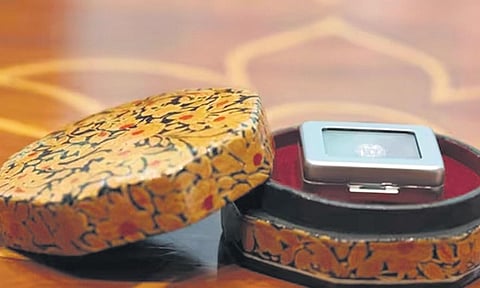

Lab-grown diamonds, the eco-friendly and cost-effective alternative to natural diamonds, have emerged as a trend that is capturing the attention of consumers and celebrities alike. During a recent visit to the United States, Indian Prime Minister Narendra Modi made headlines by presenting Jill Biden, the First Lady, with a 7.5-carat lab-grown diamond, drawing attention to the growing global fascination with these synthetic gems. Back in Delhi, a growing number has embraced the allure of lab-grown diamonds, recognising their benefits and affordability, which allows for other financial investments. The government has also taken notice, recently announcing the removal of the 5 per cent duty on lab-grown diamonds in the recent budget.
With international celebrities such as Leonardo DiCaprio, Emma Watson, and Rihanna endorsing lab-grown diamonds, these man-made gems have not only gained recognition for their ethical appeal but have also become a symbol of style.
“There is no difference between lab-grown diamonds and natural ones. Similar to how there is no man-made intervention in the shape, colour and clarity of natural diamonds, LGDs are formed completely in lab-like conditions,” says Satya Sharma, who works for Fiona Diamonds, Delhi. While the PM’s recognition has made it a talking point, the gem had a comfortable market of its own in the country’s capital since 2016. “Most of our customers are young and open to options that are sustainable for the environment and light on their pockets. The older generation is still sceptical about the authenticity of lab-grown diamonds”, says Satya.
According to Limelight Lab-Grown Diamonds founder, Pooja Sheth Madhavan, the demand for these stones comes from a huge number who aspired to possess diamonds but could not afford the natural ones. She says, “In India, only 5 per cent of women consume natural diamonds. Lab-grown diamonds are an opportunity for the balancing 95 per cent to wear them. Since these diamonds also have 80 per cent buyback value and 100 per cent exchange opportunities, they have become the go-to choice for many looking to indulge themselves in some bling. Although lab-grown diamonds are finding the most use in engagement rings, a significant portion of the market is also occupied by self-earning, independent women, who are looking to adorn themselves with solitaire-based jewellery like rings, studs earrings and pendants.”
While traditionalists still maintain that natural diamonds are superior, the younger generation has fully embraced the innovation. A customer who had recently bought an engagement ring researched lab-grown diamonds before buying one. “It is eco-friendly and economical– the choice was simple. But it was difficult to convince my family of its value,” says the Delhi resident.
Sargam Saxena, who was out diamond shopping for a relative’s wedding also believes that lab-grown diamonds are a sustainable alternative. She says, “Natural diamond mining results in environmental harm and issues with human rights, such as forced labour, so it is a big plus in eradicating all of this. Lab-grown diamonds are produced under carefully- regulated lab settings using the latest tech negating the need for harmful mining techniques and minimising the carbon impact connected with diamond manufacture.”
Busting Myths
Lab-grown diamonds are fake diamonds: Lab-grown diamonds have the exact chemical, physical, and optical properties of mined diamonds.
The clarity of lab-grown diamonds and mined diamonds are different: Since both have identical chemical properties, it is difficult even for experts to differentiate.
Lab-based diamonds are not durable: Lab-grown diamonds have the same famous Mohs hardness of 10. They are as durable as natural diamonds.
ECO-FRIENDLY
A natural diamond emits almost 20 times the carbon emitted during the making of a lab-grown one. A lot of carbon emission takes place during the diesel-operated mining activities that occur to access natural diamonds. An astonishing amount of carbon is also emitted during its transportation. The electricity used by the industry can power one million households.